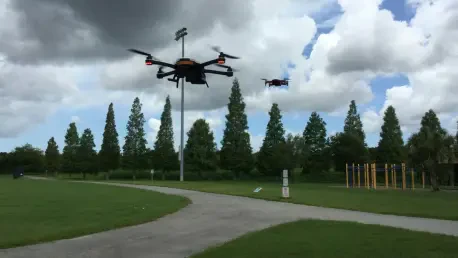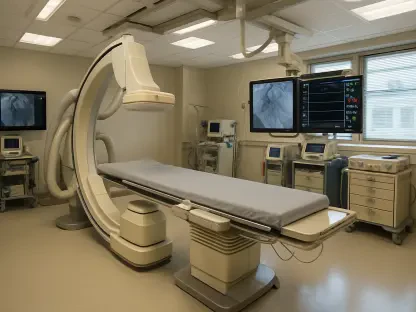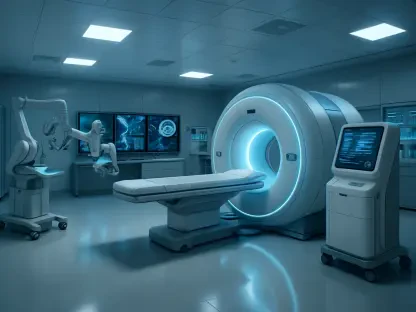A groundbreaking initiative in Cambria County, Pennsylvania, aims to revolutionize emergency medical response using drones to deliver critical supplies. Scheduled for launch in July, this innovative program promises to drastically cut down response times during emergencies such as heart attacks, drug overdoses, allergic reactions, and severe bleeding. By bridging the crucial gap before emergency medical technicians can arrive, especially in rural areas where ambulance response times might be prolonged, the initiative is expected to significantly enhance patient outcomes.
Leveraging Technology for Life-Saving Interventions
Led by the Southern Alleghenies Planning and Development Commission in partnership with various stakeholders including Aerium, the program employs drones to deliver vital medical supplies like automatic external defibrillators (AEDs), Narcan, EpiPens, and tourniquets. These tools are essential during the first critical minutes of an emergency. This innovative approach aims not only to improve survival rates but also to minimize the severity of medical conditions by providing immediate care. Supported by a $1.92 million grant from the U.S. Department of Transportation, this project positions Cambria County at the forefront of technological advancements in healthcare. John Eberhardt of ATA Aviation asserts that Cambria’s initiative will be among the nation’s first to implement drone-based medical deliveries, a milestone that underscores its pioneering status amid technological evolution.
The initiative is particularly poised to benefit rural areas where traditional ambulance services might take longer to reach emergency sites. The program’s primary goal is to deliver medical supplies within minutes, which can be crucial in time-sensitive situations. By providing immediate access to life-saving tools, drones have the potential to save lives and improve patient outcomes significantly. Other regions in the United States, like Florida, have similar programs under development, but Cambria County’s initiative appears to be closer to operational readiness, highlighting the county’s innovative edge.
Strategic Planning and Preparations
The rollout of this pioneering initiative has involved meticulous planning and extensive preparations. ATA, in collaboration with Aerium and other partners, has concentrated on determining the necessary drone specifications, developing precise dispatch protocols for emergency responders, and securing essential flight clearances from the Federal Aviation Administration (FAA). Ensuring the drones are equipped with the necessary sensors and technology to operate safely without interfering with other airborne vehicles has been a crucial area of focus. Public presentations to inform the community about the program have begun, and local emergency responders are expected to receive specialized training next month to ensure they are ready for the new technology.
A series of test flights are slated to commence in July, with actual emergency responses expected to begin by August. These test flights will be preceded by demonstration flights, aimed at gathering essential data on various parameters, including drone functionality, bystander willingness to utilize the delivered supplies, and the overall impact on patient outcomes. The results from these tests will be critical in assessing the system’s efficiency and effectiveness. Moreover, the information gathered will be instrumental in securing additional funding, up to $10 million, potentially allowing the program to expand beyond Cambria County to include seven additional counties over a period of up to three years.
Initial Testing and Deployment Strategy
The program’s initial deployment strategy is to conduct tests in more populated areas of Cambria County, such as Westmont, Southmont, and Johnstown. This strategy aims to maximize the frequency of emergency deployments to ensure a robust dataset to demonstrate the drone system’s effectiveness. These areas are expected to see three to five deployments a day, compared to rural regions that might see the same number of deployments only in a week. By focusing on populated areas initially, the program aims to gather comprehensive data that can be used to refine the system and validate its effectiveness before expanding to less populated rural regions.
DroneUp, a Virginia Beach-based company specializing in delivery services, will provide the drones, pilots, and logistics for the initial phase of the project. Eventually, these roles are expected to be filled locally. During the testing phase, to ensure privacy and compliance with regulations, the program will not collect any personal information about patients or details regarding their medical conditions. This approach underlines the importance placed on patient privacy and ethical considerations.
Community and Emergency Response Integration
Tom Davis, the emergency management coordinator for Cambria County, acknowledged the increased workload that the program is likely to bring for his team. However, he expressed optimism about the potential life-saving benefits of this groundbreaking initiative. The positive response from the emergency response team and their eagerness to be part of this innovative effort reflect the community’s general readiness to integrate drone technology into their emergency medical response framework. The community’s support and the emergency response team’s enthusiasm highlight the promising future of this initiative.
The overarching potential for drone technology to revolutionize emergency medical response, particularly in underserved and rural areas, is significant. If successful, Cambria County’s program could serve as a model for other regions, promoting widespread adoption of drone-enabled medical solutions. Additionally, if insurance companies recognize the program’s efficacy, they may support its costs, further facilitating its expansion. This could lead to a paradigm shift in how emergency medical services are delivered, especially in remote and hard-to-reach areas.
Looking Ahead
A pioneering initiative in Cambria County, Pennsylvania, seeks to transform emergency medical response by employing drones to deliver essential supplies. Set to launch in July, this cutting-edge program aims to significantly reduce response times during emergencies such as heart attacks, drug overdoses, allergic reactions, and severe bleeding. The use of drones will help bridge the critical time gap before emergency medical technicians arrive, particularly in rural areas where ambulance response times can be delayed. This innovative approach has the potential to greatly improve patient outcomes by ensuring timely delivery of lifesaving tools and medications. Officials hope that the initiative will become a model for other counties facing similar challenges, demonstrating how technology can effectively enhance emergency medical services. Ultimately, the program aspires to save lives and ensure that remote areas receive the timely medical support they desperately need. Additionally, continuous assessments and community feedback will be integral in refining the drone response system for broader implementation.









